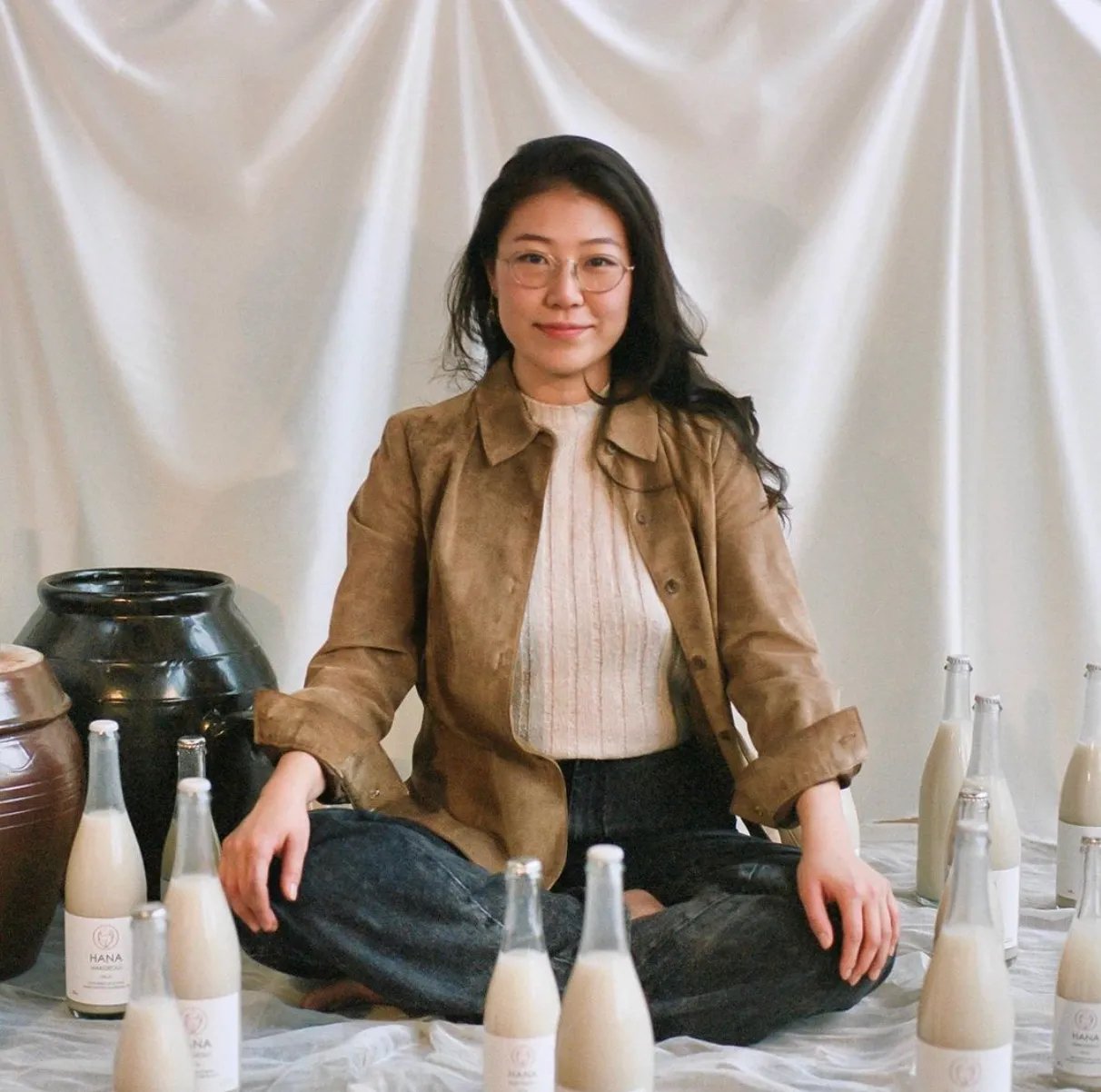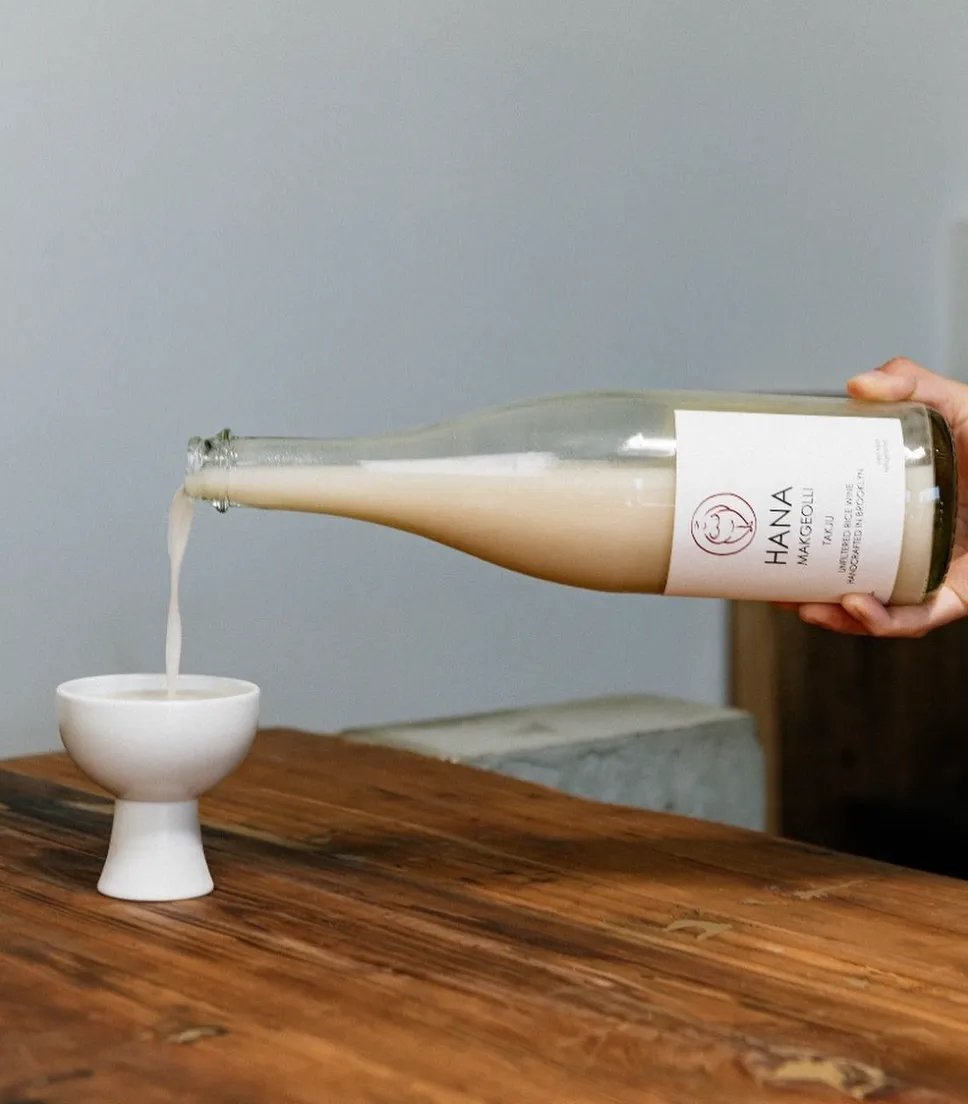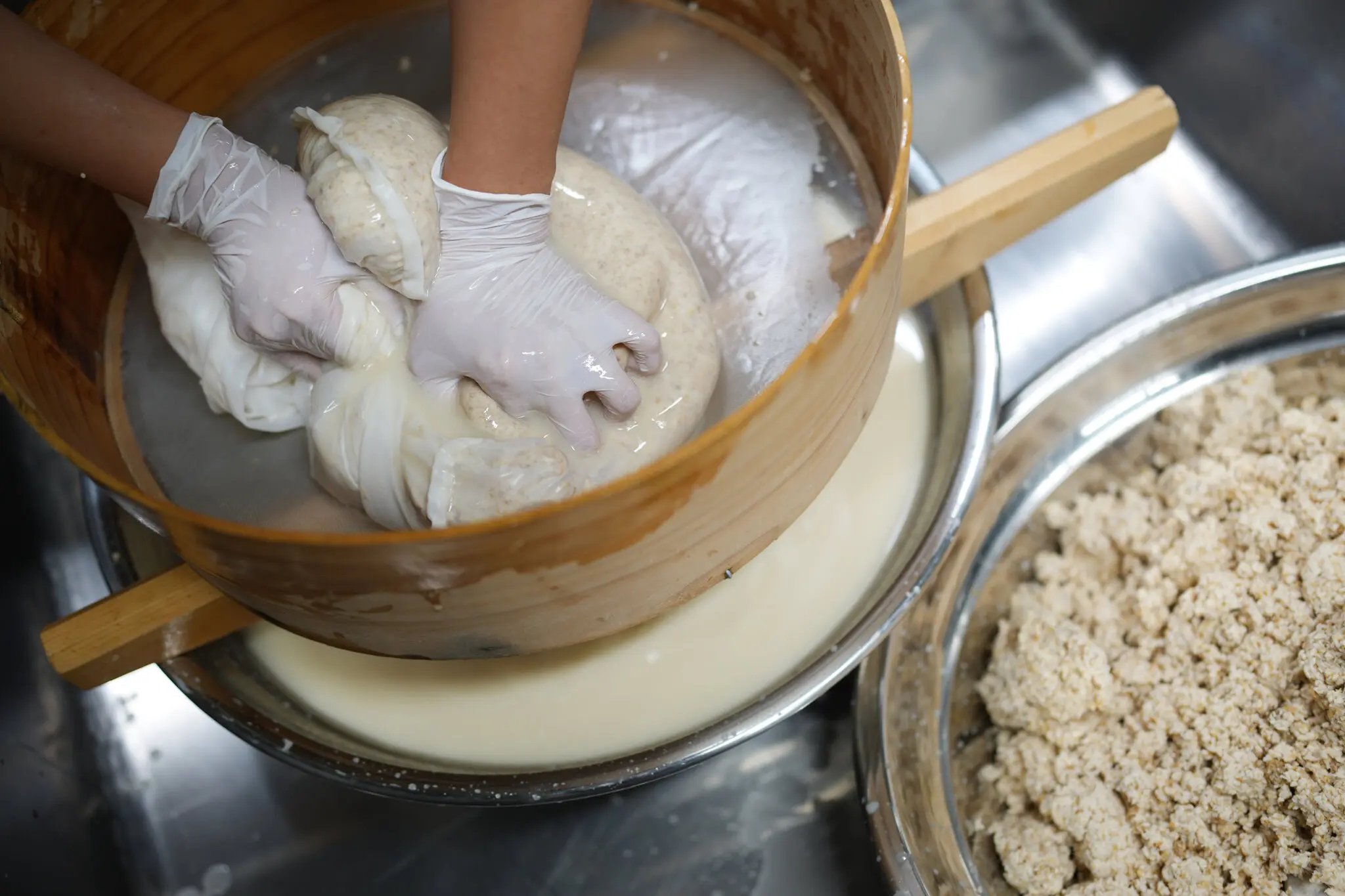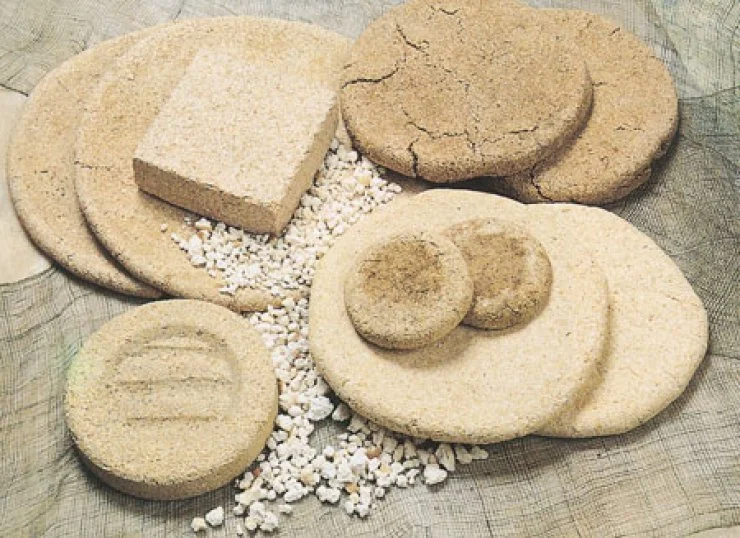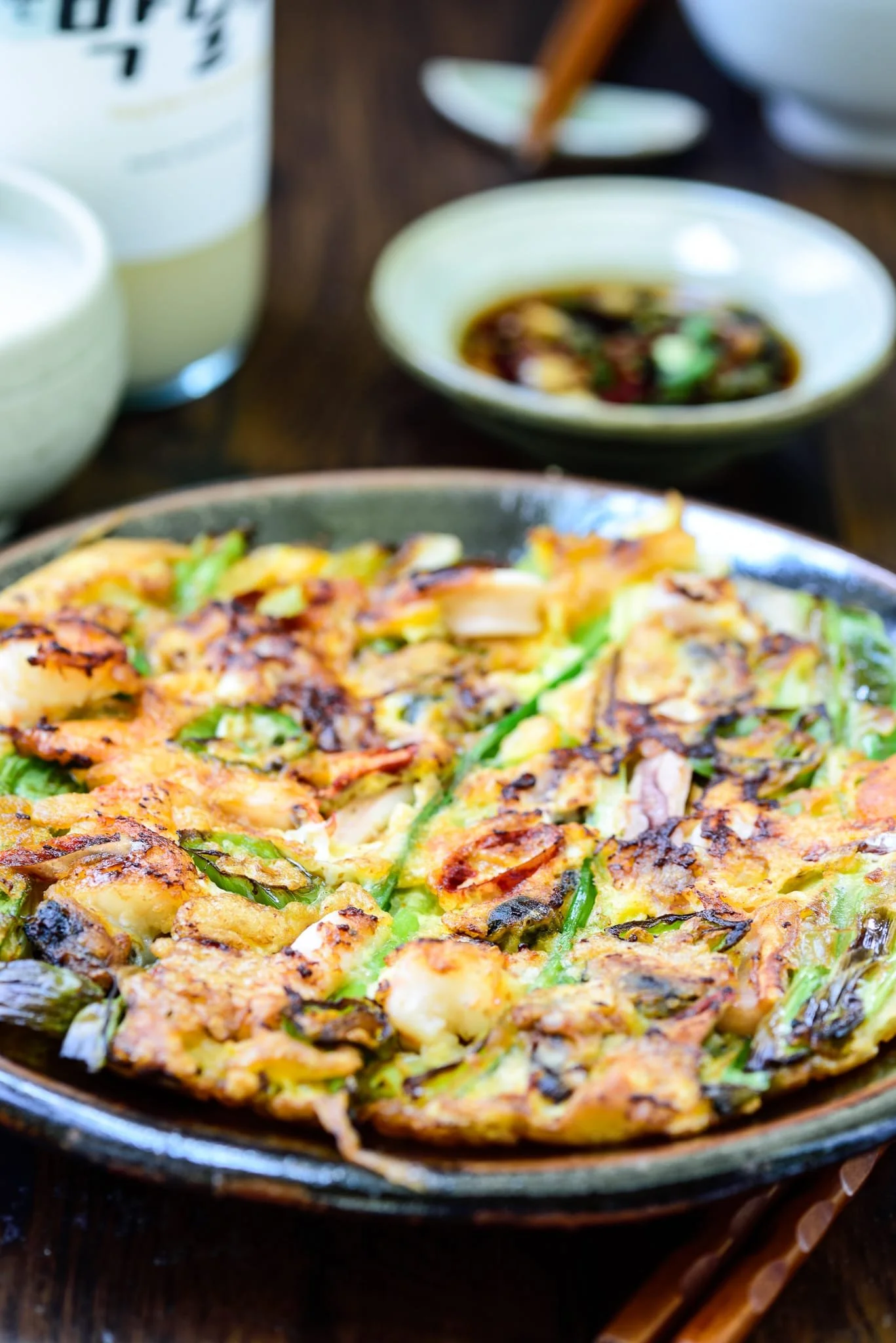Alice Jun’s Hana Makgeolli: Bringing Korean Rice Wine into the Spotlight
“My dad made his first batch of makgeolli in the U.S. the year I was born, and he kept doing it every year after that, so it just became part of my life”
- Alice Jun, founder of Hana Makgeolli
According to Alice Jun, “Makgeolli is an alternative to craft beer, natural wine, and sake. And really it’s at the intersection of those three categories.” If you’re not familiar with makgeolli (pronounced mahk-oh-lee), it has a storied history as Korea’s oldest alcoholic beverage with a history dating back 2,000 years. It’s hard to emphasize the place that it has held in Korean homebrewing culture, but it’s similar to the relationship with wine making in rural France or cider in colonial America.
Long considered a farmer’s drink because it packed a probiotic punch and a hefty amount of dietary fiber to sustain a days labor, its name loosely translates to “recklessly filtered”. It has a distinctive cloudy, milky appearance with a sweet/tart profile, round weighty texture, slight fizz, and delightful lactic tang. All of these attributes combine to make makgeolli an excellent food partner to wash away all of those umami, salty, piquant, fermented, and spicy favors inherent to Korean cuisine. Traditionally, it is eaten with pajeon, a crispy fried scallion pancake, on a rainy day. The pitter patter of the rain during rainy season (jangma) intertwined with the sizzle of the pan make them the perfect pairing on a soggy day.
Alice Jun grew up brewing makgeolli with her father and continued the practice when she went off to college because it kept her homesickness at bay. She continued her practice even as she began a career in management consulting and soon it blossomed into a passion project that had a life of its own, moving from her kitchen where she was brewing 30-40 gallons at a time to a larger shared commercial space where she could have access to more precise temperature controls. As word spread and demand ramped up, she eventually quit her day job and started her company, Hana Makgeolli signing a 10 year lease on a brewery space of her own in February 2019 located in Greenpoint, NY.
Nuruk, a traditional Korean wild fermentation starter that is a dry cake of wheat, barley, and rice that hosts a variety of wild yeasts, bacteria, and koji mold spores. Yong Ha Jeong, a sool (Korean alcoholic beverage) producer in Los Angeles thinks of nuruk as “the craziest of sourdoughs”.
Hana’s makgeolli is made up of organic medium-grain white rice, organic sweet rice, nuruk imported from Korea (a dried grain cake inoculated with wild yeast, koji mold, and wild lactobacillus and has been used as a traditional fermentation starter for thousands of years) and filtered water. It’s important to note that the rice is left intact and unpolished (unlike sake) leaving behind fats and proteins in the bran and germ for different enzymes and microorganisms to breakdown and digest, creating a broader and more complex range of flavors. Oftentimes, mastery of sake is achieving a laser focused singular purity, but that would be impossible to recreate within makgeolli’s fermentation process since you have a panoply of wild innoculants consuming, interacting, and creating so many different flavor compounds. The ultimate goal when making makgeolli is finding the right balance within that chaos. She soaks the nuruk and then filters the mixture through a wine bladder press and uses the resulting nuruk “tea” for a nuanced flavor. A blend of whole grain rice and coarsely ground rice is slowly fed into the brewing vessel with the nuruk tea and water over three to four installments over the course of a week and a half. The idea is to slowly build the cultures and to ensure that they are strong enough to complete the ferment well. Her brews age much longer than what is standard in Korea ( 30-70 days vs. 7-14 days). Unlike beer and wine, saccharification (starch being converted to sugars) and the sugar converting to alcohol all take place as a parallel fermentation meaning that multiple transformations are occurring all at once making it difficult to ascertain what the potential alcohol content will become within the mixture of whole rice and unconverted starch.
More advanced styles of makgeolli production are classified by different stages. The primary stage sets the base with each successive stage offering the potential for increased ABV, some residual sugar, and more depth and complexity. All of Hana’s brews are made with three stages or more.
She’s also been experimenting with different floral and botanical elements and playing with different rice varietals and grains to show people the diversity and range that makgeolli is capable of. Schisandra berries, elderflower, mugwort, hydrangeas, and chrysanthemum are just some of elements that you’ll find used in production at Hana. For instance, hydrangea blossoms contain a chemical compound called psyllodulcin that has about 500 times the amount of sweetness of sugar, but it’s not a fermentable sugar and adds another layer to the makgeolli and chrysanthemum offers a deep vegetal and herbaceous quality as well as florality. (V)
Takju 16 is Hana Makgeolli’s signature brew and is an excellent introduction to traditionally made Korean makgeolli. This bottle is inspired by Alice’s homebrew recipes and is coarsely filtered, near-dry, and undiluted with an alcohol by volume that sits at 16%. This wine is most well known for its creamy body and a full spectrum of flavors from a wild fermented brew, starting with the extremely floral almost melon-like character of fermented rice, followed by the brightness of their wild yeast that is perfectly balanced with the naturally occurring lactic acid and rice sediment. Alice enjoys this particular brew with overripe persimmons and soft sheep’s milk cheese.
Best kept refrigerated or stored in a cool, dry place away from direct sunlight. Shake gently to incorporate sediment and enjoy cold. There is no real expiration date on unopened wines, which are stable because of their high ABV and because they undergo pasteurization. Once opened, these wines will remain stable for approximately two weeks, assuming that they are resealed and kept in the fridge. $36.00
Stemming from the Korean root words hwa and ju, Hwaju can translate to both flower wine and fire water. Naturally fermented, this unfiltered rice wine is made with organic rice and infused with hydrangea and chrysanthemum flowers. Inspired by the traditional herbal and flower infused sools that can only be found in Korea, the Hwaju 12 is a sayangju (4 stage fermented alcohol). The Hwaju 12 is 12% ABV, dry with intriguing botantical elements, and bright with naturally occurring lactic acid and effervescence. Delicately floral and earthy, Hwaju 12 is not as exuberant as the Takju 16 or as austere as Yakju 14. A delight to pair with ooey, gooey baked brie with grilled bread and fruit, some comforting kimchi jjigae soup, or perhaps the never-ending array of hot pot possibilities.
Best kept refrigerated or stored in a cool, dry place away from direct sunlight. Shake gently to incorporate sediment and enjoy cold. There is no real expiration date on unopened wines, which are stable because of their high ABV and because they undergo pasteurization. Once opened, these wines will remain stable for approximately two weeks, assuming that they are resealed and kept in the fridge. $40.50
Historically reserved for the noble class, Yakju 14 is the precious clarified portion of a brew that captures the essence of sool in its purest form. At 14% ABV, the Yakju 14 is light in body, bone dry, refined, and bright with naturally occurring lactic acid. The Yakju 14 is a oyangju (5 stage alcohol) fermented over the course of 8 weeks, the Yakju 14 has deep and intricate flavors of barley and grain. The zippy, lemony profile makes this an extremely food versatile option. Would be delicious with a margarita pizza (a perfect counter point to the fresh basil and the bright tomato sauce), or an array of banchan pickles with Korean barbecue.
Best kept refrigerated or stored in a cool, dry place away from direct sunlight. Enjoy cold. There is no real expiration date on unopened wines, which are stable because of their high ABV and because they undergo pasteurization. Once opened, these wines will remain stable for approximately two weeks, assuming that they are resealed and kept in the fridge. $43.50
Below is a recipe for pajeon from Sohui Kim, a crispy scallion pancake that is classically enjoyed with makgeolli. This recipe is highly customizable. Feel free to substitute the shredded vegetables for 12 ounces of shrimp and/or thinly sliced squid. It’s custom to place one large pancake in the middle of the table where one person holds it in place with their chopsticks and the other person tears off a piece. The favor is then returned making for a shared communal experience.
INGREDIENTS
Yield: 3 to 4 servings
For the Pancakes
½ cup all-purpose flour
½ cup potato starch (or ¼ cup each white rice flour and cornstarch)
¾ teaspoon fine sea salt, plus more as needed
½ teaspoon baking powder
¾ cup ice water
1 large egg
¼ cup finely chopped kimchi
4 cups finely chopped or grated mixed vegetables (carrots, zucchini, bell peppers, kale, whatever you’ve got)
4 scallions, cut into 2-inch-long sections and thinly sliced lengthwise
2 tablespoons grapeseed or peanut oil, plus more as needed
For the Dipping Sauce
3 tablespoons soy sauce
2 teaspoons rice wine vinegar, plus more to taste
1 teaspoon finely grated fresh ginger or garlic (optional)
½ teaspoon sesame oil, plus more to taste
Pinch of granulated sugar
PREPARATION
Step 1
Prepare the pancakes: In a large bowl, whisk together all-purpose flour, potato starch, salt and baking powder.
Step 2
In a medium bowl, combine water, egg and kimchi. Whisk kimchi mixture into flour mixture, and whisk until smooth. Fold in vegetables and about three-quarters of the scallions. (Save the rest for garnish.)
Step 3
In a large nonstick skillet over medium heat, heat 2 tablespoons oil. Scoop ¼ cup portions of batter into the skillet, as many as will fit while not touching, flatten, and fry until dark golden on the bottom, about 2 to 3 minutes. Flip and continue to fry until other side is browned, 2 to 3 minutes. Transfer to a paper towel-lined plate and sprinkle with a little more salt. Continue with remaining batter.
Step 4
Before serving, make the dipping sauce: In a small bowl, stir together soy sauce, vinegar, ginger or garlic (if using), sesame oil and sugar. Sprinkle sliced scallion over pancakes, and serve with dipping sauce on the side.

